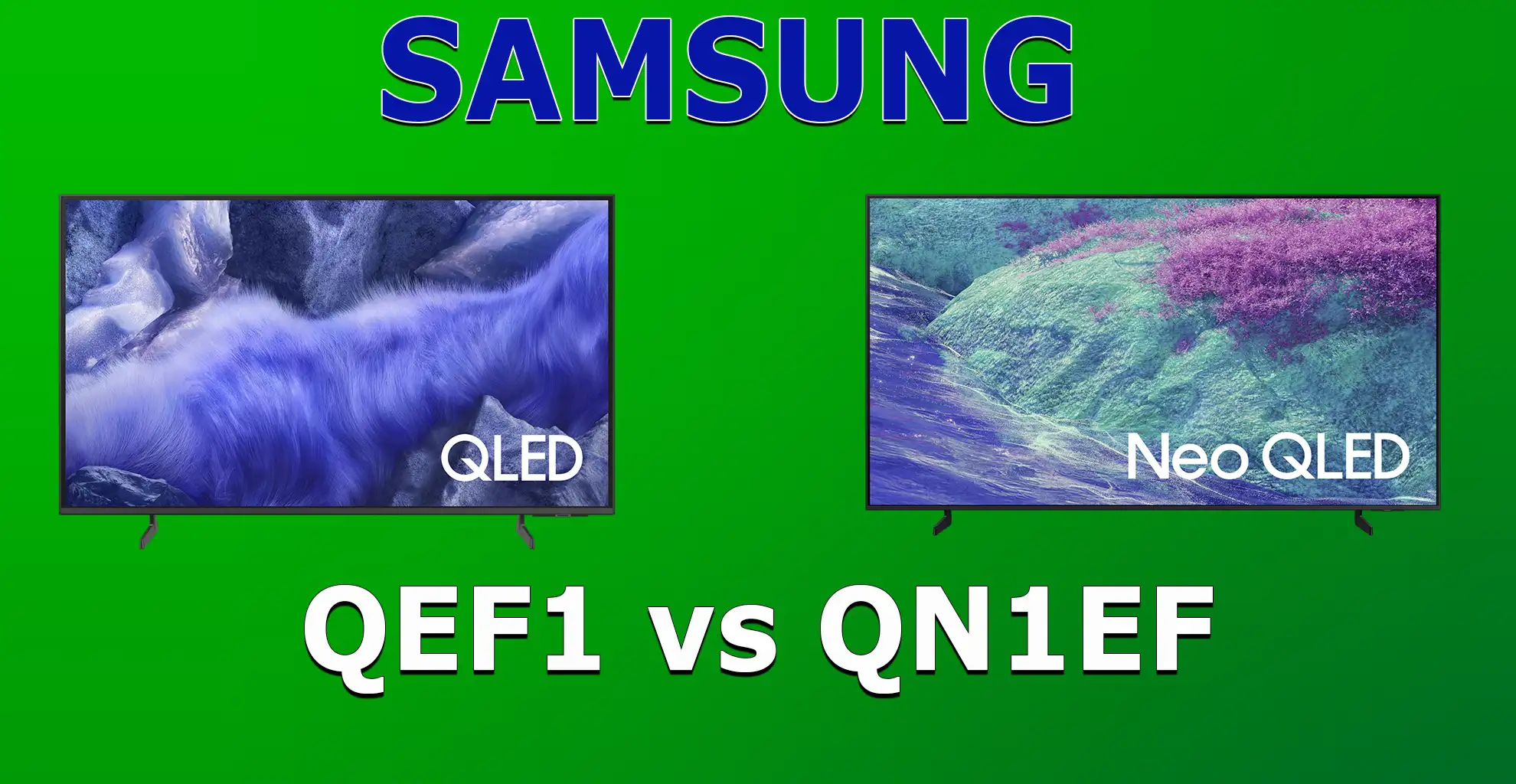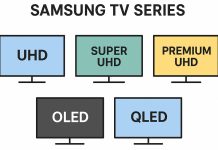In the 2025 model range, Samsung QN1EF TVs are available in two technological variants: Neo QLED and standard QLED. Despite their similar names, these devices differ significantly in terms of internal components, image and sound quality, and smart features. Overall, Samsung has continued its practice of producing non-standard TV models that occupy an intermediate niche between the 2024 and 2025 models.
Image quality: Neo QLED vs. QLED
The Neo QLED QN1EF is equipped with Quantum Mini LED backlighting, which, combined with Quantum Matrix Technology Slim, provides precise brightness and contrast control. This makes blacks appear deeper and bright areas retain detail. The NQ4 AI Gen2 intelligent processor with 20 neural networks optimizes the image in real time, adding extra clarity. Be skeptical of loud claims about artificial intelligence. In fact, the TV does not have artificial intelligence features, and the processor is equipped with simple pre-installed image enhancement programs such as Auto HDR Remastering, HDR Brightness Optimizer, and Color Booster Pro. Also worth noting is the PANTONE Validated certificate, which confirms the accuracy of color reproduction.
In contrast, the QLED QN1EF uses standard LED backlighting without Quantum Mini LED and Quantum Matrix. Its Q4 AI processor offers basic image processing without support for higher-level artificial intelligence features. Visually, this manifests itself in less accurate contrast control and simplified HDR performance, where only Quantum HDR without the Neo prefix is supported. This version also lacks Color Booster Pro and Auto HDR Remastering, and this model cannot display high-quality images due to its budget panel.
Audio system and sound effects
The Neo QLED QN1EF features Object Tracking Sound Lite, which allows sound to move in accordance with the position of objects on the screen. It also supports Q-Symphony technology, which synchronizes the TV’s sound with a Samsung soundbar for a more immersive sound experience. The built-in Active Voice Amplifier function amplifies speech against background noise, while Adaptive Sound+ adapts the sound depending on the type of content and room acoustics. Fans of wireless headphones will appreciate the 360 Audio Mode and quick synchronization with Galaxy Buds.
The QLED QN1EF model has simpler sound. It does not have Object Tracking technology, Q-Symphony support, or intelligent speech amplification. The main sound is provided by two speakers with a total power of 20W, without advanced processing or spatial sound mode. The built-in amplifier works as standard, and there are no additional audio features.
Gaming capabilities and refresh rate
The Neo QLED QN1EF offers advanced gaming features. It supports a refresh rate of up to 144 Hz at 4K resolution via HDMI 2.1 and is compatible with FreeSync Premium Pro, making it an excellent choice for gamers. The TV features a Game Bar interface, as well as MiniMap Zoom and Super Ultrawide Game View functions, which allow you to play in 21:9 and 32:9 formats. Artificial intelligence recognizes the game genre and automatically adjusts the image and sound settings. Additional modes, such as Dynamic Black EQ and Game Motion Plus, help improve visibility in dark scenes and increase image smoothness.
In contrast, the QLED QN1EF only supports a standard refresh rate of 60 Hz and is not equipped with an HDMI 2.1 interface. There is no support for FreeSync or an advanced gaming interface. Gaming features are limited to automatic switching to game mode (ALLM) and basic motion adaptation. This makes the QLED less suitable for modern gaming consoles and PCs with high requirements.
Smart features and connectivity interfaces
The Neo QLED QN1EF is equipped with the updated Tizen 2025 operating system and works with Bixby, Alexa, and Google Assistant voice assistants. The device can act as a smart home control center thanks to built-in support for Matter, Zigbee, and Thread, as well as the availability of SmartThings Hub. Additional features include voice recognition, automatic speech translation, Workout Tracker mode, and the ability to set generative wallpapers. The TV also supports Multi View with simultaneous display of two content sources, Apple AirPlay, Tap View, and call control via ConnecTime. The SolarCell Remote is charged by light and equipped with a USB-C port.
These features are available in a limited form on the QLED QN1EF. The operating system is also based on Tizen 2025, but there is no support for Matter and Zigbee, no SmartThings Hub function, voice recognition, or generative wallpapers. Multi View and many advanced scenarios for interacting with other devices are not supported. The remote control does not have a solar panel and is charged in the traditional way. The connection interface is also simpler: only three HDMI ports with a maximum support of 60 Hz and one USB, while the Neo QLED offers four full-fledged HDMI ports with 144 Hz support and two USB ports.






